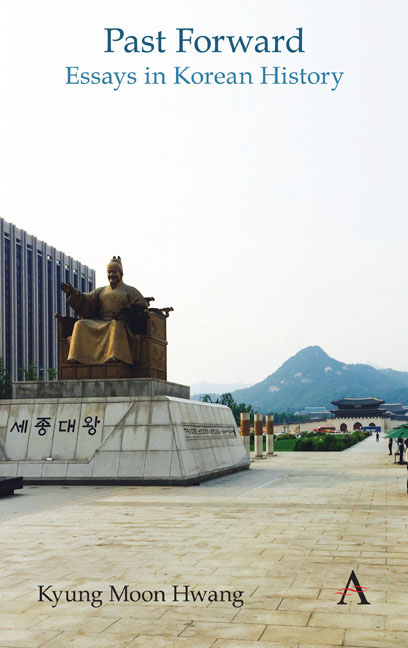Book contents
- Frontmatter
- Contents
- List of Figures
- Foreword
- Chronologies of Korean History
- Themes
- Acknowledgments
- Note on Romanization and Spelling
- Part I Circulating History
- Part II Durable Traditions
- Part III Ancient Remains
- Part IV Dynastic Depths
- Part V Modern Origins
- Part VI Challenges of Nationhood
- Part VII History Makers
- 41 Demythologizing King Sejong the Great
- 42 Modern Lady Shin Saimdang
- 43 Five Potential National Heroes
- 44 A Portrait of Great Painters
- 45 Four Young Men from 1884
- 46 Na Hye-seok
- 47 Hyundai Motors and Chung Ju-yung
- 48 Yun Isang and the East Berlin Case
- 49 Ri Young-hee, Iconoclast for Democracy
- 50 Kim Young Sam's Broad Historical Appeal
- 51 Kim Dae Jung's Historic Election
- Part VIII External Presences
- Part IX Trials of Modernization
- Part X Gripped by the Past
- Index
44 - A Portrait of Great Painters
from Part VII - History Makers
- Frontmatter
- Contents
- List of Figures
- Foreword
- Chronologies of Korean History
- Themes
- Acknowledgments
- Note on Romanization and Spelling
- Part I Circulating History
- Part II Durable Traditions
- Part III Ancient Remains
- Part IV Dynastic Depths
- Part V Modern Origins
- Part VI Challenges of Nationhood
- Part VII History Makers
- 41 Demythologizing King Sejong the Great
- 42 Modern Lady Shin Saimdang
- 43 Five Potential National Heroes
- 44 A Portrait of Great Painters
- 45 Four Young Men from 1884
- 46 Na Hye-seok
- 47 Hyundai Motors and Chung Ju-yung
- 48 Yun Isang and the East Berlin Case
- 49 Ri Young-hee, Iconoclast for Democracy
- 50 Kim Young Sam's Broad Historical Appeal
- 51 Kim Dae Jung's Historic Election
- Part VIII External Presences
- Part IX Trials of Modernization
- Part X Gripped by the Past
- Index
Summary
Recently in South Korea there has been a revival of interest in the painter Lee Jung-seob (Yi Jung-seop), who died in the mid-1950s while destitute and suffering from psychological trauma. This suggests a classic case of an impoverished, despondent artist struggling to gain recognition because his craft was far ahead of its time.
In other ways, however, Lee's life and career well reflected his time, which was a particularly turbulent period in modern Korean history. When he was born in 1916, Korea had just fallen under Japanese colonial rule, and he reached his artistic maturity during the years of the Pacific War (World War II), the postliberation experience after 1945, and the Korean War. Lee's surviving paintings, which unfortunately appear to represent just a fraction of his total output, seem to portray vividly the fierce determination to survive and express the turmoil of his time.
Indeed, many of Korea's most celebrated painters serve as illuminating representatives of Korea's past. We can begin with Gim Hong-do and Shin Yun-bok, contemporaries in the late eighteenth century and creators of the most celebrated paintings from the Joseon era. Gim produced many masterful works, but the most cherished today are his genre paintings (pungsokhwa), depictions of people of various backgrounds going about their daily lives. These treasured works offer an inquisitive and sympathetic perspective on their human subjects, who are the focal points of the illustrations, with most of the surrounding background omitted. Shin's genre paintings, meanwhile, take a stylistically different approach, filling in the brilliant details of the natural surroundings and mostly featuring a narrower range of human subjects: aristocratic males and glamorous females, particularly gisaeng courtesans.
Although prized for their distinctive techniques, the works of both Gim and Shin demonstrate the sensitivities and sentiments of the artists’ real-life circumstances. They were both court painters, professionals in the Office of Painting (Dohwaseo) from long-established lineages of technical officials, or jungin, whose members also filled government posts as interpreters, physicians, accountants, scientists and legal officials. In the late Joseon era, the jungin belonged to a kind of middle class, suffering social discrimination due to their lower hereditary status below the ruling aristocracy (yangban) but also better educated than the majority commoner population.
- Type
- Chapter
- Information
- Past ForwardEssays in Korean History, pp. 131 - 133Publisher: Anthem PressPrint publication year: 2019



